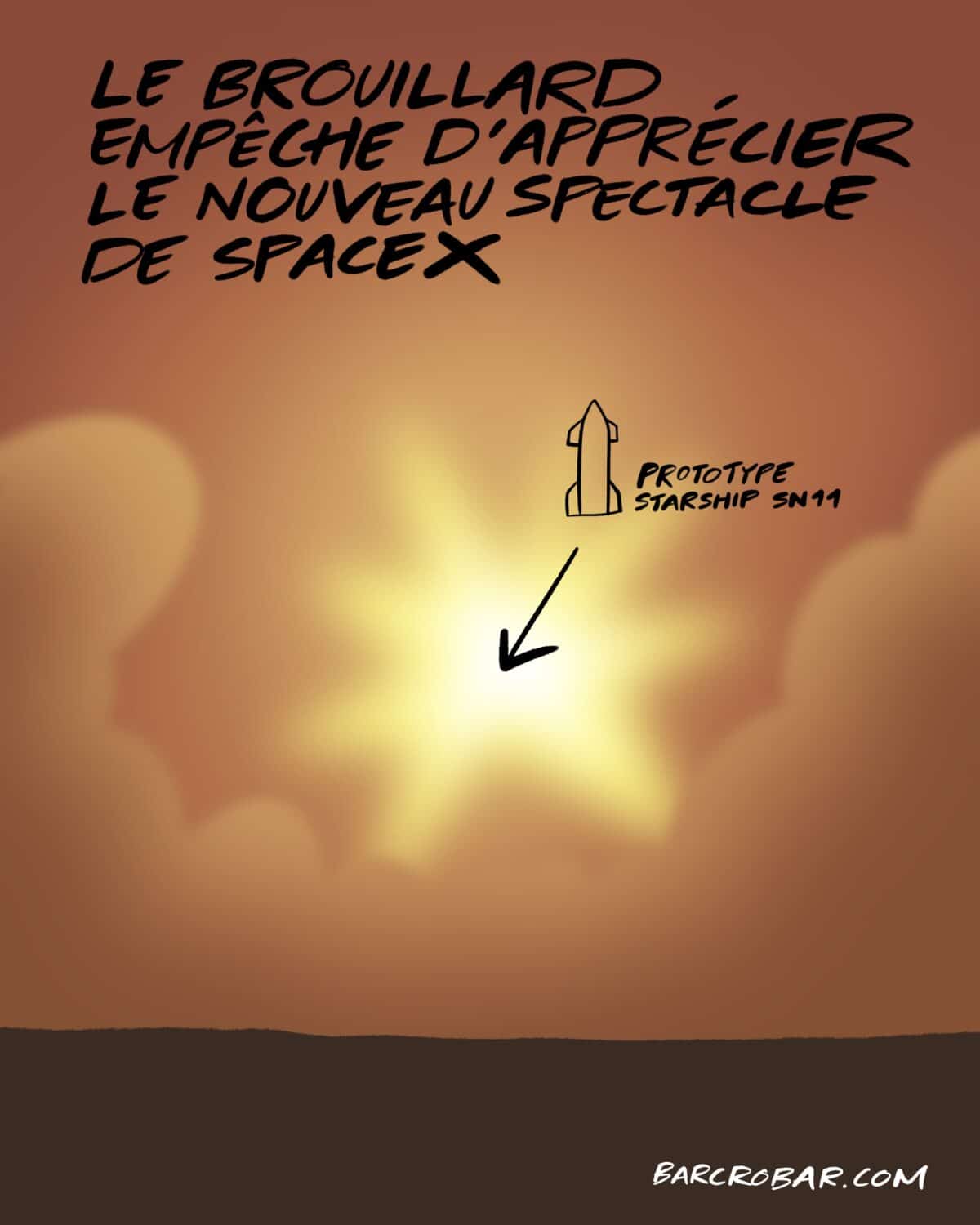Initially scheduled for 26 March, then 29 March, SpaceX finally organised another test of a prototype Starship spacecraft on 30 March. But while the flight could have turned the page on the previous tests, which all ended in one way or another with an explosion, either directly on landing or a few minutes later, things did not go according to plan.
The circumstances surrounding the loss of the SN11 prototype are still not very clear. It has to be said that the weather conditions were frankly poor, preventing a clear view of the launcher - fog had set in at Boca Chica, Texas, on the very day of the test launch. To make matters worse, the live broadcast provided by SpaceX was just as poor, with jerks and interruptions.
A POSSIBLE PROBLEM WITH ONE OF THE ENGINES
It was clearly during the second half of the flight that the SN11 prototype encountered an unforeseen event: the rocket was able to take off normally from its launch pad, reach the desired altitude, shut down each of the three Raptor engines one after the other, and flip onto its side to return to Earth. We were able to see this in the few moments when the video managed to display an image.
However, as Starship SN11 continued its descent, with the four ailerons on the sides adjusting the rocket's aerodynamics, it was clearly at the moment when the rocket was due to recover to the vertical position that there was a problem. The video doesn't show anything, but at an altitude of one kilometre, the engines started up again. It was then that an unusual noise could be heard.
Did the rocket disintegrate in flight or did it explode when it hit the ground? According to Elon Musk, it was the second scenario: " At least the crater's in the right place! "he wrote on Twitter. An initial lead shared by the entrepreneur suggests that it was the No. 2 engine that was experiencing problems, and that this happened as soon as the rocket ascended - something that was difficult to ascertain due to the lack of a suitable live feed.
" It seems that engine 2 had problems during ascent and did not reach the chamber operating pressure level during combustion on landing, but in theory this was not necessary. "continued the SpaceX founder. " Something important happened shortly after the start of the landing burn "he added, referring to the debris scattered around the site.
In the sequence below, a huge explosion can be heard more clearly at the test site, followed by a shower of debris falling from the sky. Given the direction of the objects, the hypothesis of a remote explosion, while the rocket was still in the air, has been put forward. In fact, the shrapnel does not appear to have come from the launch pad - i.e. from the opposite direction, in the video embedded in the tweet.
The good news, obviously, is that SpaceX seems to have mastered most of the manoeuvres expected of the Starship, at least those performed as part of its tests (jumps of no more than 10 or 20 kilometres in altitude, to test the final stages of the return to Earth, with a limited number of Raptor engines). This was even after engine 2 had encountered a glitch.
However, the company still has problems with the final phase of its round trips, when the rocket has to decelerate hard enough not to land heavily on the launch pad. This is the most perilous stage, as it requires the rocket to be quickly tilted back into the vertical position while aiming for the landing zone. But at least SpaceX has data from four identical tests.
text numerama.com by Julien Lausson

